1971 Volkswagen Dune Buggy, a symbol of the free-spirited 1970s, emerged as a thrilling fusion of Volkswagen Beetle practicality and off-road adventure. This iconic vehicle, born from a unique blend of engineering ingenuity and cultural zeitgeist, quickly captured the hearts of enthusiasts seeking escape and excitement.
The Dune Buggy, with its stripped-down design and powerful engine, redefined the notion of automotive freedom, transforming open roads and rugged terrain into exhilarating playgrounds.
The Dune Buggy’s origins trace back to the early 1960s, where the Volkswagen Beetle’s robust engine and compact chassis caught the eye of American entrepreneurs seeking to create a vehicle specifically designed for the burgeoning off-road market. This marriage of European engineering and American ingenuity resulted in a vehicle that was both affordable and capable, paving the way for a cultural phenomenon that would leave a lasting impact on automotive history.
History and Background
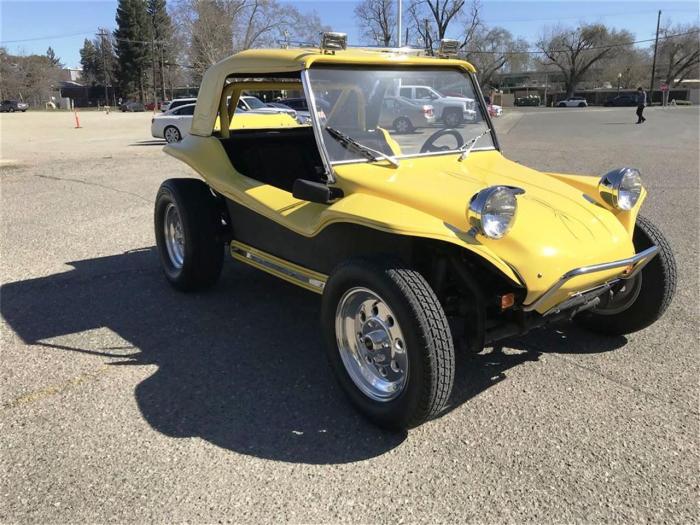
The Volkswagen Dune Buggy, a symbol of 1970s counterculture and automotive freedom, was born from a unique blend of engineering ingenuity, American entrepreneurial spirit, and the burgeoning off-road driving craze. Its origins can be traced back to the iconic Volkswagen Beetle, a car that became a global phenomenon in the postwar era.The Beetle’s air-cooled engine, simple construction, and affordability made it a perfect platform for customization and modification.
In the early 1960s, California-based enthusiasts began experimenting with converting Beetles into off-road vehicles, inspired by the burgeoning dune buggy racing scene in Southern California.
The Evolution of the Dune Buggy
The development of the Volkswagen Dune Buggy can be traced through a series of key milestones:
- Early 1960s:The first dune buggies emerged as rudimentary conversions of Volkswagen Beetles, with fiberglass bodies and stripped-down interiors. These early buggies were often built by enthusiasts in their garages, showcasing a DIY spirit and a desire to create a unique driving experience.
- Mid-1960s:The popularity of dune buggies grew rapidly, leading to the emergence of specialized manufacturers. Companies like Meyers Manx, the most iconic dune buggy maker, began producing fiberglass bodies and chassis kits, making it easier for people to build their own buggies.
The Manx, with its distinctive rounded bodywork and distinctive rear engine layout, became the benchmark for dune buggy design.
- Late 1960s:The dune buggy craze reached its peak, with numerous manufacturers entering the market. A wide range of models were available, from basic, affordable buggies to more luxurious and sophisticated versions. The dune buggy became a symbol of the free-spirited counterculture movement, and its association with surfing, beaches, and off-road adventures further cemented its popularity.
The 1971 Volkswagen Dune Buggy was a blast from the past, a symbol of freedom and adventure. It’s no surprise that many enthusiasts also sought out the sleek and stylish 1972 Volkswagen Karmann Ghia , a European-inspired coupe with a touch of luxury.
While the Dune Buggy was all about off-road thrills, the Karmann Ghia offered a more refined driving experience, perfect for cruising down coastal roads or navigating city streets.
- Early 1970s:The popularity of dune buggies began to decline, due to factors such as stricter safety regulations, increased competition from other off-road vehicles, and a shift in consumer tastes. However, the legacy of the dune buggy continues to this day, with enthusiasts and collectors still cherishing these iconic vehicles.
The Volkswagen Beetle’s Influence
The Volkswagen Beetle played a pivotal role in the creation of the dune buggy. Its air-cooled engine, rear-engine layout, and simple construction made it an ideal base for customization. The Beetle’s ruggedness and reliability, combined with its affordability, made it a popular choice for off-road adventures.
“The Volkswagen Beetle was the perfect car for the dune buggy. It was cheap, it was reliable, and it was easy to modify.”
Bruce Meyers, founder of Meyers Manx
The Cultural Context
The emergence of the dune buggy in the early 1970s was inextricably linked to the cultural landscape of the time. The 1960s had witnessed a wave of social and cultural change, with the counterculture movement challenging traditional values and embracing freedom and individuality.
The dune buggy, with its association with beaches, surfing, and off-road adventures, became a symbol of this spirit of rebellion and self-expression. The dune buggy was more than just a vehicle; it was a statement of personal freedom and a rejection of conformity.
Design and Features
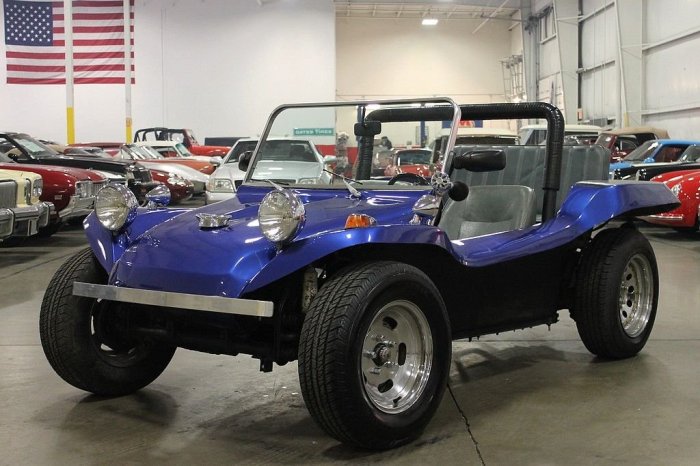
The 1971 Volkswagen Dune Buggy, despite its simple design, was a testament to innovative engineering and a departure from conventional vehicles of the time. Its unique features and construction materials made it a popular choice for off-road enthusiasts, setting a new standard for recreational vehicles.
Construction Materials and Performance
The 1971 Dune Buggy was built on a lightweight, sturdy, and reliable chassis. The chassis, a modified version of the Volkswagen Beetle’s, was constructed primarily from steel, ensuring durability and strength. The body, however, was typically made of fiberglass, significantly contributing to the vehicle’s lightweight nature.
This lightweight construction, combined with the powerful air-cooled engine, allowed the Dune Buggy to achieve impressive off-road performance. The fiberglass body was also resistant to rust and corrosion, making it ideal for use in harsh environments.
Design Comparisons with Other Vehicles
The 1971 Dune Buggy’s design differed significantly from other popular vehicles of the time. While most vehicles focused on comfort and practicality, the Dune Buggy prioritized off-road performance and affordability. The open-air design, with its lack of a roof and doors, provided an exhilarating driving experience and exceptional visibility.
The 1971 Volkswagen Dune Buggy, with its iconic shape and off-road capabilities, captured the spirit of the era. While its design was rooted in the past, Volkswagen continued to innovate, releasing vehicles like the 2002 Volkswagen Van , which embraced a more modern aesthetic and practicality.
The Dune Buggy, however, remains a timeless classic, symbolizing a carefree and adventurous spirit that continues to resonate with enthusiasts today.
This minimalist approach to design, focusing on function over form, set the Dune Buggy apart from conventional vehicles.
Key Features for Off-Road Capabilities
The 1971 Dune Buggy’s off-road capabilities were largely attributed to its unique design features.
- High Ground Clearance: The Dune Buggy’s high ground clearance, achieved through its modified chassis and suspension system, allowed it to navigate uneven terrain with ease. This feature was crucial for traversing obstacles and rough surfaces common in off-road environments.
- Independent Suspension: The independent suspension system, another key feature, provided excellent articulation and shock absorption. This allowed the wheels to move independently, providing optimal traction and stability even on uneven terrain.
- Large Tires: The large, knobby tires, designed for off-road use, provided excellent traction and grip, allowing the Dune Buggy to conquer sand, mud, and rocks with relative ease.
- Lightweight Construction: The lightweight construction, achieved through the use of fiberglass for the body, contributed significantly to the Dune Buggy’s off-road performance. The reduced weight allowed the vehicle to maneuver easily over challenging terrain and climb steep inclines.
Performance and Handling
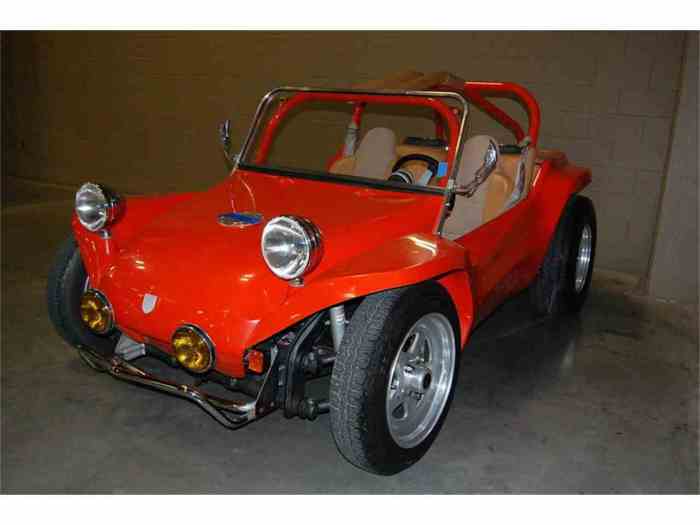
The 1971 Volkswagen Dune Buggy, while known for its distinctive design and off-road capabilities, offered a driving experience that was both exhilarating and unique. Its performance characteristics were a product of its lightweight construction, air-cooled engine, and simple suspension system.
Engine Specifications and Performance
The Dune Buggy was powered by Volkswagen’s iconic air-cooled 1.6-liter four-cylinder engine, a tried-and-true powerplant known for its durability and reliability. While not a powerhouse, the engine produced approximately 50 horsepower, sufficient for the vehicle’s lightweight frame. This power was delivered through a four-speed manual transmission, sending power to the rear wheels.
The 1971 Volkswagen Dune Buggy was a symbol of freedom and adventure, perfect for cruising the beach or tackling off-road trails. But if you’re looking for a vehicle that combines that same spirit with the comfort of a home on wheels, consider the 1985 Volkswagen Westfalia Camper.
This iconic van offers the same rugged reliability of the Dune Buggy, but with a pop-up roof, sleeping quarters, and a kitchenette, making it ideal for exploring the open road and camping in style. The Dune Buggy might be a blast for a quick thrill, but the Westfalia Camper offers a whole new level of adventure and practicality.
The Dune Buggy’s performance was characterized by its quick acceleration and nimble handling, particularly on unpaved surfaces. The lightweight construction, coupled with the engine’s torque, allowed for a relatively quick 0-60 mph time of around 15 seconds, while top speed hovered around 80 mph.
Suspension System and Handling
The 1971 Dune Buggy’s suspension system was a simple yet effective design, consisting of independent front suspension with torsion bars and a rigid rear axle with leaf springs. This setup provided a comfortable ride on rough terrain and allowed for significant wheel articulation, crucial for off-road driving.
The Dune Buggy’s relatively high ground clearance and short wheelbase contributed to its excellent off-road handling, allowing it to navigate obstacles and traverse uneven terrain with ease. The Dune Buggy’s lack of a traditional frame, relying instead on a unibody construction, further enhanced its off-road capabilities by providing a low center of gravity, increasing stability.
Off-Road Performance, 1971 Volkswagen Dune Buggy
The 1971 Volkswagen Dune Buggy was a popular choice for off-road enthusiasts, particularly in sandy and desert environments. Its lightweight design, high ground clearance, and excellent suspension made it capable of tackling challenging terrain with relative ease. Compared to other off-road vehicles of the era, such as the Jeep CJ-5 or the International Scout, the Dune Buggy offered a more nimble and agile experience.
While it lacked the power and towing capacity of these larger vehicles, its smaller size and maneuverability made it ideal for navigating tight trails and tackling challenging obstacles.
Key Performance Metrics
| Metric | Value |
|---|---|
| Engine | 1.6-liter air-cooled four-cylinder |
| Horsepower | 50 hp |
| Transmission | Four-speed manual |
| Drive Train | Rear-wheel drive |
| 0-60 mph | Approximately 15 seconds |
| Top Speed | Around 80 mph |
| Ground Clearance | 10.5 inches |
Cultural Impact and Legacy: 1971 Volkswagen Dune Buggy
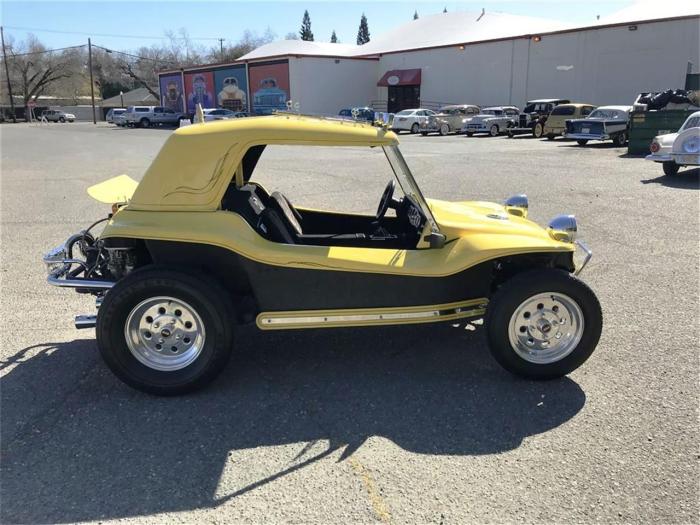
The 1971 Volkswagen Dune Buggy, a symbol of freedom and adventure, left an indelible mark on popular culture, influencing automotive design and inspiring countless enthusiasts. Its unique blend of off-road capability and affordability made it a cultural icon, representing a spirit of rebellion and a desire to escape the ordinary.
Impact on Popular Culture
The Dune Buggy’s popularity transcended its intended purpose as a beach buggy. It became a fixture in popular culture, appearing in films, television shows, and music videos. Its distinctive design and association with a carefree lifestyle made it an ideal vehicle for portraying characters who were adventurous, independent, and rebellious.
- The Dune Buggy’s most notable appearance in film was in the 1968 comedy “The Love Bug,” where it starred as Herbie, a sentient Volkswagen Beetle with a mind of its own. This film solidified the Dune Buggy’s image as a fun and whimsical vehicle, further enhancing its cultural appeal.
- The Dune Buggy’s presence in television shows like “The Dukes of Hazzard” and “CHiPs” further cemented its association with high-speed chases and thrilling escapades. These shows showcased the Dune Buggy’s off-road capabilities and its ability to navigate challenging terrain, reinforcing its image as a vehicle for adventure.
- The Dune Buggy’s influence extended to music videos as well. Bands like The Beach Boys and The Ramones incorporated the Dune Buggy into their videos, highlighting its connection to the surf and rock ‘n’ roll culture of the 1960s and 1970s.
Collecting and Restoration
The 1971 Volkswagen Dune Buggy, a symbol of the free-spirited 1970s, has become a highly sought-after collectible vehicle. Its unique design, rugged construction, and association with the California surf culture have contributed to its enduring appeal among enthusiasts. The value and collectability of these vehicles have increased significantly over the years, making them a worthwhile investment for passionate collectors.
Restoring a 1971 Volkswagen Dune Buggy
Restoring a 1971 Volkswagen Dune Buggy can be a rewarding and challenging endeavor. The process involves meticulous attention to detail, specialized knowledge, and a passion for preserving automotive history. Restoring a Dune Buggy involves a multi-step process, from assessing the condition of the vehicle to sourcing and replacing parts.
Assessing the Condition
The first step in restoring a 1971 Volkswagen Dune Buggy is to thoroughly assess its condition. This involves inspecting the body, chassis, engine, and all other components for damage, wear, and tear. A comprehensive inspection will help determine the scope of the restoration project and the necessary resources required.
Sourcing Parts
Once the condition of the Dune Buggy is assessed, it is crucial to source the necessary parts for restoration. Many parts are still available from original equipment manufacturers (OEMs), aftermarket suppliers, and specialized restoration shops.
Restoring the Body
Restoring the body of a 1971 Volkswagen Dune Buggy typically involves addressing any damage, repairing rust, and applying a fresh coat of paint. The original fiberglass body panels can be repaired or replaced, and the paint scheme can be restored to its original specifications or customized to the owner’s preference.
Restoring the Chassis
The chassis of a 1971 Volkswagen Dune Buggy is typically made of steel and is prone to rust. Restoring the chassis involves addressing any rust damage, repairing any structural issues, and applying a protective coating.
Restoring the Engine
The engine of a 1971 Volkswagen Dune Buggy is a 1.6-liter air-cooled four-cylinder unit. Restoring the engine involves disassembling it, inspecting its components, replacing worn or damaged parts, and reassembling it.
Restoring the Interior
Restoring the interior of a 1971 Volkswagen Dune Buggy involves replacing worn or damaged upholstery, seats, and other interior components. The original interior design can be preserved or customized to the owner’s preference.
Resources and Communities
A vast network of resources and communities exists for collectors and enthusiasts of 1971 Volkswagen Dune Buggies. These resources provide invaluable support, information, and connections for anyone interested in preserving and restoring these iconic vehicles.
Online Forums and Communities
Numerous online forums and communities dedicated to Volkswagen Dune Buggies offer a platform for enthusiasts to connect, share knowledge, and seek advice. These forums are a valuable resource for finding parts, discussing restoration techniques, and connecting with other collectors.
Clubs and Organizations
Many clubs and organizations are dedicated to preserving and promoting the history of Volkswagen Dune Buggies. These organizations host events, rallies, and meetings, providing opportunities for enthusiasts to gather, share their passion, and learn from each other.
Restoration Shops and Specialists
Specialized restoration shops and specialists offer a wide range of services for restoring 1971 Volkswagen Dune Buggies. These professionals have the expertise and experience to handle all aspects of the restoration process, from bodywork to engine rebuilds.
Identifying Authentic 1971 Volkswagen Dune Buggies
Identifying an authentic 1971 Volkswagen Dune Buggy is crucial for collectors and enthusiasts. Authenticity ensures that the vehicle is original and has not been altered or modified.
VIN Number
The Vehicle Identification Number (VIN) is a unique identifier assigned to each vehicle. The VIN of a 1971 Volkswagen Dune Buggy can be used to verify its authenticity and track its history.
Original Parts
Authentic 1971 Volkswagen Dune Buggies will have original parts, including the engine, transmission, body panels, and interior components. The presence of original parts is a strong indicator of authenticity.
Documentation
Original documentation, such as the owner’s manual, service records, and registration papers, can provide valuable insights into the history and authenticity of a 1971 Volkswagen Dune Buggy.
Expert Inspection
A thorough inspection by a qualified expert can help identify any signs of alteration or modification. An expert can assess the vehicle’s condition, verify the authenticity of its parts, and provide a comprehensive evaluation.
Final Review
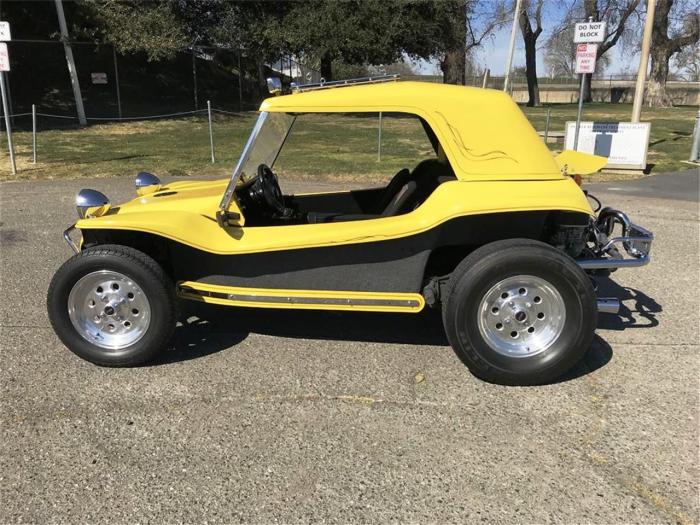
The 1971 Volkswagen Dune Buggy, a testament to the enduring allure of classic automotive design, continues to inspire a sense of adventure and freedom. From its iconic silhouette to its raw performance, the Dune Buggy remains a symbol of a bygone era when the open road held endless possibilities.
Whether cruising along coastal dunes or tackling challenging off-road trails, the Dune Buggy’s legacy as a symbol of unbridled adventure endures, captivating enthusiasts and inspiring a new generation of drivers to embrace the spirit of the open road.